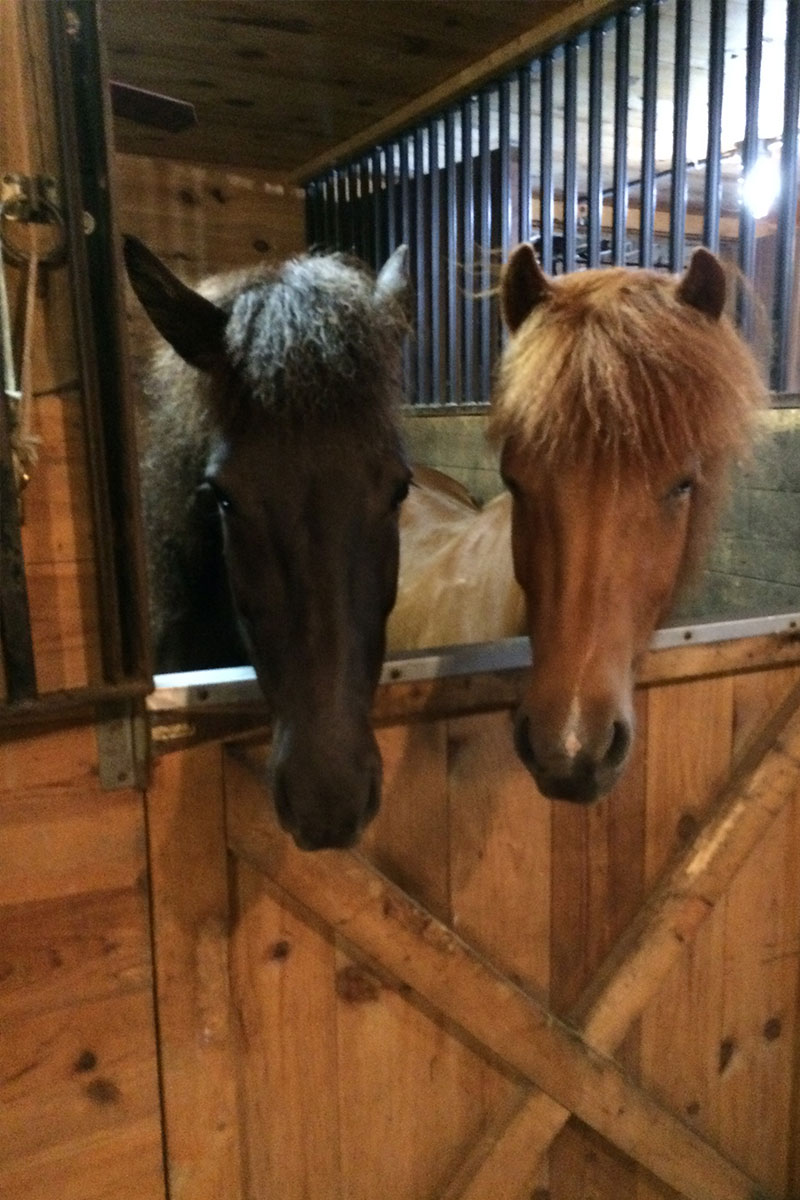About the Icelandic Horses
The Icelandic Horse has many unique features
Versatility
Pleasure Riding
Care and Feeding
Family Pleasure


A Thousand Years of Isolation
A Special Look
The Only Naturally Five-Gaited Horse

We get questions . . .
Can Icelandic Horses be kept alone?
How much land do I need to keep an Icelandic Horse?
Was the Icelandic Horse the original horse of the Vikings?
What makes Icelandic Horses different from other types of horses?
Explain the evaluation system for Icelandic Horses
What is the Blup system?
How tall is the Icelandic Horse?
Why are Icelandics always called horses and never ponies?
In Iceland, which had its own written language when most of Europe still relied on Latin, they’re called only one word, hest, or horse.
What colors do Icelandic Horses appear in?
How are Icelandic Horses named?
In Iceland and other countries where Icelandic Horse are bred, the horses are given Icelandic names. Every horse has a personal name, and most horses have a surname. Sometimes the names express the hopes and feelings of the breeder and are chosen to fit the horse. A lot of horses are named after their color. The surname is the name of the farm where the horse has been bred.
For example, our stallion is named Loki frá Hofi. Loki is his personal name, and it’s the name of the trickster god of Norse mythology. Frá is Icelandic for “from,” and Hofi is the name of the farm in Iceland that raised him.
Is it true that Icelandic Horses are one of the purest breeds of horse in the world?
Yes, the purity of the Icelandic Horse is unique. No horse has been imported to Iceland for more than a thousand years. This situation has not changed, even though a lot of horses have been exported to different countries.
How long can I ride, and breed my Icelandic Horse?
Icelandics mature late and are not ridden before they are five years old. On the other hand they can be used for riding and breeding purposes up to a very old age. Riding horses of 20 years and older are very common, and a 25 year old broodmare is no exception.
What are the gaits of the Icelandic Horse?
Icelandic Horses are four- or five- gaited. They have the three basic gaits: walk, trot, and, canter. They have two more gaits, tölt and flying pace. A four-gaited horse does not do the flying pace. Tölt is a regular four-beat movement which resembles a rack. It can be performed at different speeds, varying from a slow tölt, a bit faster than a walk, medium tölt, which compares in speed to a medium trot, and fast tölt, as fast a medium canter. Flying pace is ridden at very high speeds and only over short distances, with both the legs on the same side of the horse touching down at the same time.
Where can I learn more about The Icelandic Horse?
Eiðfaxi International is an Icelandic Horse magazine published bimonthly in Iceland and translated into English. Everyone who has a interest in the Icelandic Horse should receive this publication. Tölt News is an informative American periodical published quarterly. The national breed organization, the United States Icelandic Horse Congress, also has a quarterly newsletter for its members.
There are also a number of very educational books written by Christine Schwartz.
